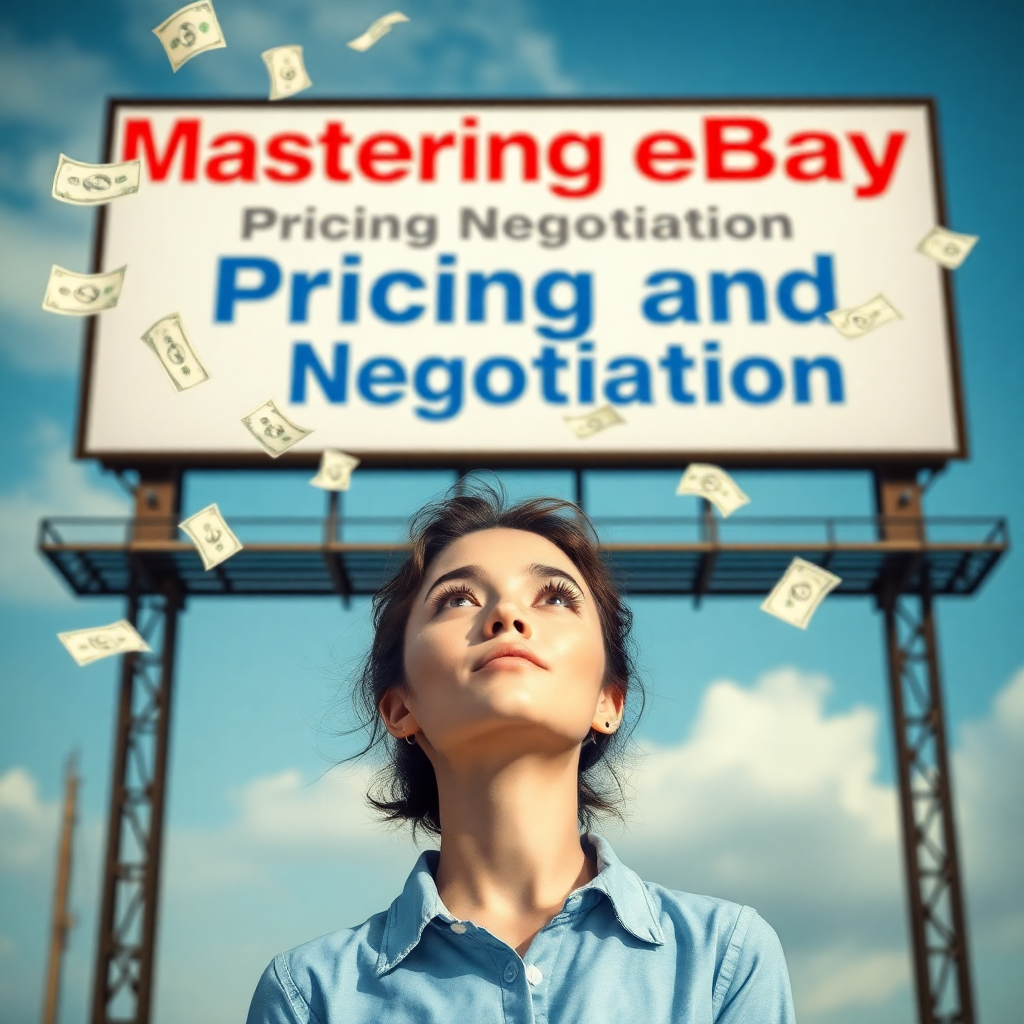In the competitive landscape of eBay, mastering pricing and negotiation techniques is essential for sellers aiming to maximize their profits. With millions of listings available, understanding how to strategically price your items and negotiate effectively can set you apart from the competition. This article explores proven strategies that can help you optimize your pricing approach and enhance your negotiation skills, ultimately leading to increased sales and profitability.

1. Understanding Pricing Strategies
Auction vs. Fixed-Price Listings
One of the first decisions you’ll face as an eBay seller is choosing between auction-style listings and fixed-price listings.
- Auction Listings: These are suitable for unique items or collectibles where demand is uncertain. You can start with a low bid to attract interest, but be sure to set a reserve price to protect your minimum acceptable price.
- Fixed-Price Listings: Ideal for items with established market values, fixed-price listings allow you to set a price that reflects your desired profit margin. This format is often preferred for higher volume sales, enabling sellers to list multiple items efficiently.
Research Competitor Pricing
Before setting your prices, conduct thorough research on similar items in your niche. Utilize eBay’s Pricing Recommendation Tool to gauge average selling prices and adjust your listings accordingly. By understanding the market landscape, you can position your products competitively without undervaluing them.
Utilize Psychological Pricing
Psychological pricing techniques can make a significant difference in how buyers perceive your prices. For example, pricing an item at $18.99 instead of $19.00 can create the illusion of a better deal without affecting your profit margins significantly.
2. Leveraging eBay’s Tools for Pricing
Best Offer Feature
Enabling the “Best Offer” option on your listings invites buyers to negotiate directly with you. Set a minimum acceptable price and use incoming offers to gauge buyer interest and willingness to pay. This feature not only increases engagement but also provides valuable insights into market demand.
Promotional Offers and Discounts
eBay provides various promotional tools that can help boost visibility and drive sales:
- Coupons and Discounts: Create enticing offers such as “Buy One, Get One 50% Off” or seasonal discounts to attract more buyers.
- Free Shipping: Offering free shipping can be a powerful incentive. Consider incorporating shipping costs into your product price to maintain profitability while appealing to cost-conscious consumers.
3. Negotiation Techniques
Conduct Thorough Research
Before entering negotiations, research the item’s market value and current demand trends. This knowledge will empower you to make informed offers that are both competitive and fair.
Build Rapport with Buyers
Establishing a positive relationship with potential buyers can facilitate smoother negotiations. If you have previous transactions with a buyer or if they are interested in multiple items, leverage this rapport during discussions.
Respond Promptly and Professionally
Timely responses are crucial in negotiations. When a buyer submits an offer, evaluate it against your pricing strategy and respond quickly—either by accepting, declining, or countering with a reasonable offer.
Counter offer Strategically
If a buyer’s offer is lower than expected, don’t hesitate to make a counteroffer. Provide justification for your asking price based on market research or unique product features. This approach shows that you value the item while remaining open to negotiation.
4. Continuous Monitoring and Adjustment
Pricing is not a one-time decision; it requires ongoing assessment and adjustment based on market conditions, competition, and sales performance:
- Track Sales Data: Regularly analyze which items sell well at what prices and adjust accordingly.
- Stay Informed on Market Trends: Keep an eye on industry trends that could affect demand for your products.
- Be Flexible: Don’t hesitate to experiment with different pricing strategies or promotional offers during slow sales periods or peak seasons.
Thus, mastering pricing and negotiation techniques on eBay is essential for maximizing profits in this dynamic marketplace. By understanding various pricing strategies, leveraging eBay’s tools effectively, employing sound negotiation tactics, and continuously monitoring market conditions, sellers can enhance their competitiveness and drive sales growth. By investing time into refining these skills, you’ll not only increase your profitability but also build a loyal customer base that appreciates the value you provide through fair pricing and responsive service. Embrace these techniques as part of your overall eBay strategy, and watch your business thrive in the competitive world of online retail.
